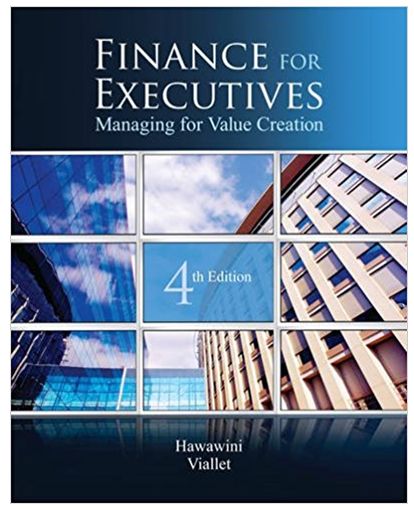Question
The Australian Copper Exploration Company On January 2, 2023, an Australian Copper Exploration Company was investigating the feasibility of two mutually exclusive investment projects. The
The Australian Copper Exploration Company
On January 2, 2023, an Australian Copper Exploration Company was investigating the feasibility of two mutually exclusive investment projects. The first prospective investment involved a strip (open cut) mining operation in Mt Isa. The second investment also involved the extraction of copper, but this expenditure would be an underground site in Olympic Dam Mine. Preliminary drilling, sampling and analysis of both sites and consultation with geologists, costing the company $240,000, suggested that both sites have similar copper reserves and useful lives.
The copper extraction process for the two types of mines and the equipment required for operation of the mines are very different, however, with the underground mining operation expected to be more complex and difficult. The process of drilling underground also increases the dangers faced by employees, although it is more environmentally friendly than the pollution and soil erosion caused by open-cut mining operations.
For the past several months, Charles Jones has been involved in the development of revenue and expense projections for the two projects. For his analysis, necessary data exists from prior investments to provide relatively accurate cost data. After examining the data at hand, Jones made the following projections related to the investment costs for each project:
|
| Strip Mining | Underground Mining |
| Preliminary drilling, sampling, and analysis | $240,000 | $240,000 |
| Equipment | $2,500,000 | $1,500,000 |
| Transportation and installation | $500,000 | $250,000 |
| Additional working capital requirements | $200,000 | $200,000 |
With respect to these figures, experience suggests that a 10-year life may be expected on either of the two prospective investments, with the practice being to depreciate the equipment the MACRS over the life of the projects.
| Year | 10-Year MACRS |
| 1 | 10.00% |
| 2 | 18.00% |
| 3 | 14.40% |
| 4 | 11.52% |
| 5 | 9.22% |
| 6 | 7.37% |
| 7 | 6.55% |
| 8 | 6.55% |
| 9 | 6.55% |
| 10 | 6.55% |
| 11 | 3.28% |
Both sites have no alternative productive use for the company. The projected salvage value for the strip-mining operation would be $600,000 at project end, while the equipment for the underground plant could be expected to have a residual value of $150,000. The working capital requirement would arise at the time of the investment but could be released upon the termination of the project with only a negligible chance of the full amount not being recovered.
In addition to the cost estimates, the engineers, based upon studies of the subsurface formations, were able to make projections as to the revenues that could be generated from the two fields. As a result of their studies, expected earnings after taxes for the two investments would be as follows:
|
| Years | Annual expected earnings after taxes |
| Strip mining | 14 | $100,000 |
| 57 | $220,000 | |
| 810 | $400,000 | |
| Underground mining | 14 | $130,000 |
| 57 | $230,000 | |
| 810 | $360,000 |
Upon receiving this information, Charles Jones questioned the reliability of the anticipated earnings. In response, William Brown, head of the engineering staff at the Australian Copper Exploration Company, informed him that both projects would have to be considered to be riskier than the firms typical investment. The analysis indicated that the expected cash flows from the underground mining operation were subject to considerably more uncertainty than those from the strip-mining project. In fact, Brown considered the extraction of coal through the underground facility to be twice as risky as that of the strip-mining alternative. For this reason, he recommended that the strip-mining project be discounted at a 10 percent rate, while the underground mining proposal be analyzed with a 20 percent criterion. Jones questioned Browns logic, in that the companys cost of capital had been computed to be 8 percent. He believed that this figure better reflected the shareholders required rate of return and for that reason should be used as the discount rate for both projects. The companys marginal corporate tax rate is 30 percent on earnings and other cash flows.
Questions:
Which discount rate would you use in the estimation of the projects NPV and why? Who is correct, Jones or Brown and why?
Using Excel and the information you learned in Chapter 12, and if the company faces a marginal corporate tax rate of 30 percent on earnings and other cash flows,
Estimate the projects cash flows for each year (0 10) as shown in Table 12.1 of the book or my Chapter 12 lecture notes.
Calculate the net present value (NPV), internal rate of return (IRR), modified internal rate of return (MIRR) and payback for each investment. Information on how to use these methods can be found in Chapter 11 and Table 12.1.
Provide a recommendation to the company as to which project the firm should accept.
Make sure to carefully explain in some detail the why of your findings and recommendation.
Which method (i.e., NPV, IRR, MIRR, or payback) is best to make the decision and why? Rank these methods from Best to Worse.
3. Outline any other factors that you think the Australian Copper Exploration Company should consider prior to making its final decision on these projects, and whether, in your opinion, any of these factors warrant acceptance of one project over another, independent of financial concerns.
Step by Step Solution
There are 3 Steps involved in it
Step: 1

Get Instant Access to Expert-Tailored Solutions
See step-by-step solutions with expert insights and AI powered tools for academic success
Step: 2

Step: 3

Ace Your Homework with AI
Get the answers you need in no time with our AI-driven, step-by-step assistance
Get Started


